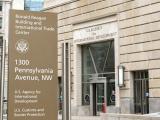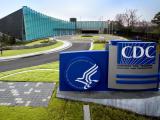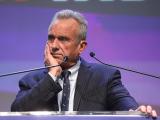May 4, 2011
Working while sick may have led to healthcare-associated H1N1 cases
A retrospective outbreak investigation of pandemic 2009 H1N1 influenza at a Chicago hospital in May 2009 found that a quarter of healthcare personnel (HCP) tested were infected, and that 65% of the infected HCP had healthcare-associated cases. Of the 76 HCP tested at the hospital, 20 (26%) had confirmed 2009 H1N1 flu, and 13 (65%) of them contracted the virus while working, in most cases getting it from coworkers. Eleven (55%) of the 20 worked for a day or more after symptom onset, which led the researchers to conclude, "Personnel working with mild illness may have contributed to transmission among HCP."
May 2 Infect Control Hosp Epidemiol abstract
LA officials say modeling enhanced their response to H1N1 pandemic
A mathematical model that was originally designed for an influenza pandemic sparked by the avian H5N1 virus helped Los Angeles County public health officials make predictions about the course of the 2009 H1N1 pandemic and mount an appropriate response, according to a report in the American Journal of Epidemiology. The county's Department of Public Health (DPH) launched a collaboration with modeling specialists at the University of Washington's Fred Hutchinson Cancer Research Center (FHCRC) in 2007 to plan for a flu pandemic. When the H1N1 virus emerged in 2009, the group adapted the model to the H1N1 situation. The authors say their model enabled them to (1) project the timing and magnitude of the epidemic in Los Angeles County and nationwide, (2) predict the effects of the pandemic vaccination campaign locally and nationwide, and (3) "predict that a third wave of pandemic influenza in the winter or spring of 2010 was unlikely to occur." This helped the DPH mount a "measured and appropriate response" to the pandemic and set reasonable goals for mitigating it. Using the model, the authors also estimated that if the pandemic vaccine had arrived in September 2009 instead of October, 2,700 deaths nationwide could have been prevented. "We believe that our simulation-based approach to influenza pandemic guidance in LA County is general enough to apply to much of the United States," they write.
May 15 Am J Epidemiol abstract
Japanese scientists say 2009 H1N1 viruses evolved rapidly during pandemic
Japanese researchers recently reported that they identified two mutations in the 2009 H1N1 influenza virus that clearly differentiated the early and late phases of the pandemic in Japan. The scientists analyzed partial sequences of the hemagglutinin and neuraminidase proteins from 253 Japanese H1N1 isolates, some collected in May 2009 and the rest collected between October 2009 and January 2010, according to their report in PLoS One. They identified one hemagglutinin change (S220T) and one neuraminidase change (N248D) that distinguished the late phase from the early one. In addition, they say they found 14 "micro-clades" in the late-phase isolates, 12 of which were new. A few isolates had mutations associated with oseltamivir (Tamiflu) resistance. The authors say their findings suggest that 2009 H1N1 viruses "have a genome with an extremely high evolutionary rate, and mutated viruses rapidly circulated around Japan via modern traffic networks." However, other reports have said that 2009 H1N1 viruses that circulated during the 2010-11 flu season generally remained well-matched to the seasonal flu vaccine.
Apr 29 PLoS One report
Apr 26 RIKEN Omics Science Center press release
















